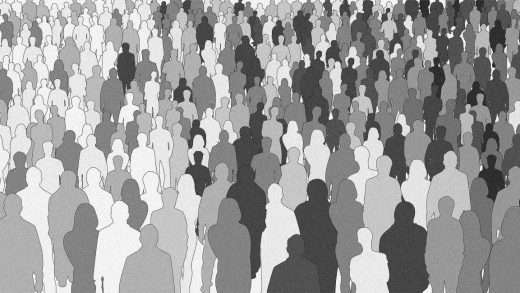A 3-step scientific approach to better DE&I training
When you consider the slew of layoffs and CEO resignations across industries (from Audrey Gelman to Greg Glassman) due to racial insensitivity and inequity—and surveys reaffirming that BIPOC employees often feel unheard and unsafe at work—it’s clear that noninclusive work environments are both pervasive and damaging. So why are companies still struggling to provide effective diversity, equity, and inclusion (DE&I) training?
Scientific research has shown that the way our brains build associations and categorize behaviors actually makes it very difficult to quickly unlearn well-developed behaviors and thinking patterns. Unfortunately, most workplace training glosses over this fact and fails to provide effective learning structures. That being said, if we use learning research and new technologies to reconstruct how we approach DE&I training, we may be able to achieve lasting, positive change.
The science behind unlearning
A common misconception I encounter when talking about training is that you absolutely need to “unlearn” biased thinking in order to fix problematic behavior, especially if it’s been ingrained for a long time. While there is some merit to this, it’s not a practical solution for workplace training. Psychology and cognitive science research that the brain “protects” well-learned, complex behaviors (such as bias) by not allowing access to the neural connections that are responsible for that learning, making it difficult to modify them. Training someone to unlearn a behavior (such as unconscious bias toward a certain individual or group) means that you need to rewire the way that that person thinks about and categorizes that action.
The difficulty in “rewiring” those connections is that complex behaviors such as bias are learned over a lifetime, with the implication that unlearning them will take a similarly substantial effort. A recent set of psychological studies indicates that the process for unlearning a given concept requires that new associations form for that concept. A simple, everyday example that many of us can now relate to is learning to communicate over video chat. The first few interactions on video chat are fumbly and awkward. The unwritten rules of face-to-face communication don’t totally translate to this new, virtual world, particularly in large groups. But over time norms and customs emerge, and our video chats become much more intuitive. Interestingly these new rules that we use to communicate over video chat were never written or formalized. Learning them required hours of video chats, learning about what works and what doesn’t. This is similar to the type of learning required to train individuals in the workplace.
In the case of DE&I, this requires changing the way someone associates a noninclusive action with the concept of noninclusivity. This learning isn’t trivial and may require hours of sustained training—something that is well beyond the one-off training with a handful of examples that most organizations use for DE&I. In order for unlearning to truly take place, it’s critical to activate the same “inputs” that occur in the real world. For example, let’s say an employee tends to assume that older co-workers are technologically incapable and often talks down to their older co-workers. This assumption and behavior need to be unlearned and reclassified as noninclusive. Effective training would need to play back that specific microaggression as it would happen in the workplace and then ask the learner to correctly classify that behavior. The issue here, as highlighted above, is that there will be a steep and long learning curve because individuals may automatically misclassify. This can be overcome with enough practice and direct, corrective feedback, but it may take more time than most DE&I workplace trainings currently provide.
A new model for DE&I training
An alternate approach to unlearning or uprooting that behavior is to create a new connection between the same input and a different, more strongly rewarded decision or behavior. Although this method won’t erase all traces of that original behavior, it is more actionable and efficient than having individuals truly unlearn the behavior while still achieving a consistent use of the desirable behavior.
Using this method, employers can work toward designing a training approach with a new three-step “ADD” (Awareness, Detection, and Decision) model:
Awareness
It may sound a bit obvious, but the very first step to being able to counteract noninclusive interactions is to be aware of them. When creating DE&I training, you cannot assume that everyone has the same level of awareness, because not everyone has the same life experience or prior knowledge. Focusing on building awareness unlocks the ability to correctly identify a noninclusive situation and then form an appropriate response.
The best way to train for awareness—as with most things—is to give people scenarios to practice that they could encounter in the workplace. It’s critical for folks to be able to develop awareness through experience because noninclusive behaviors are incredibly nuanced and complex. For example, a person with aggressive body language and tone of voice can turn an otherwise innocuous phrase into a microaggression. Someone who regularly practices interacting with scenarios that contain that kind of rich and granular detail will have a much easier time recognizing problematic behaviors in the real world.
Detection
Once an employee is aware of noninclusive behaviors, it’s important for them to understand how to categorize those different encounters (as racism, sexism, etc.) and learn the proper response for each. This step is often more effective when learners can practice in an immersive environment that allows them to experience a single scenario from multiple perspectives. I like to think of it as a literal application of “walking in someone else’s shoes.” A learner can first experience a situation from a first-person perspective, and then reenter that same scenario as a third-party observer, giving them a more holistic understanding and experience.
Decision
The last step is to put everything into practice and do this in a way where the person can get immediate feedback. The key here is to allow people to identify the situation, assess for options, and act on a decision on their own. One huge shortcoming of passive training methods such as watching videos, role-playing, or presentations is that they follow a set script and require little to no critical thinking. To really master a new skill set this complex, people need to practice executing each step on their own. In fact, research has demonstrated that without these real-world examples and trial runs, learning simply doesn’t transfer. This is part of the reason why so much work is now being done to explore how the use of new technologies such as VR and immersive learning can help create these real-world experiences and make training more effective.
While there are still myriad factors that need to be accounted for when developing trainings that have social relevance, the current scientific research on unlearning gives us a very clear picture of what is currently missing from how we approach DE&I training. The day-to-day interactions and behaviors that ultimately lead to a diverse, equitable, and inclusive workplace are unlikely to improve by only teaching abstract concepts with a handful of examples. At the very least, many hours of learning and practice (with feedback) are needed in order for a person to absorb the concepts of inclusivity and diversity, and more importantly, apply them to how we behave. This is no small feat. The good news is that with our ever-increasing scientific understanding of effective learning and the rapid development of innovative learning technologies, we can set the bar higher for what it means to create an effective and lasting DE&I initiative.
Michael Casale, PhD, is the chief science officer at Strivr, a leading provider of virtual reality (VR)-based immersive learning solutions. Casale has applied years of behavioral expertise to a variety of domains, including optimizing work and home environments for motivation and learning, understanding the behavior of consumer adoption, and bridging the gap between people and technology.
(20)



